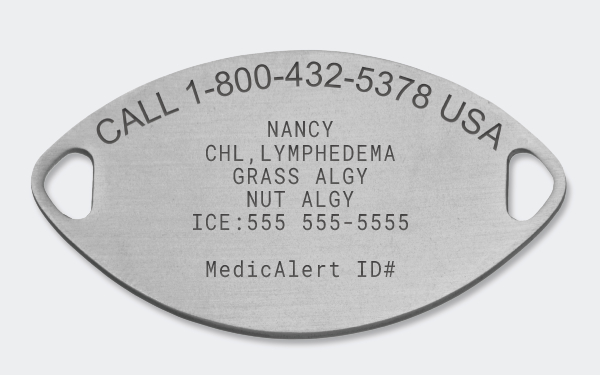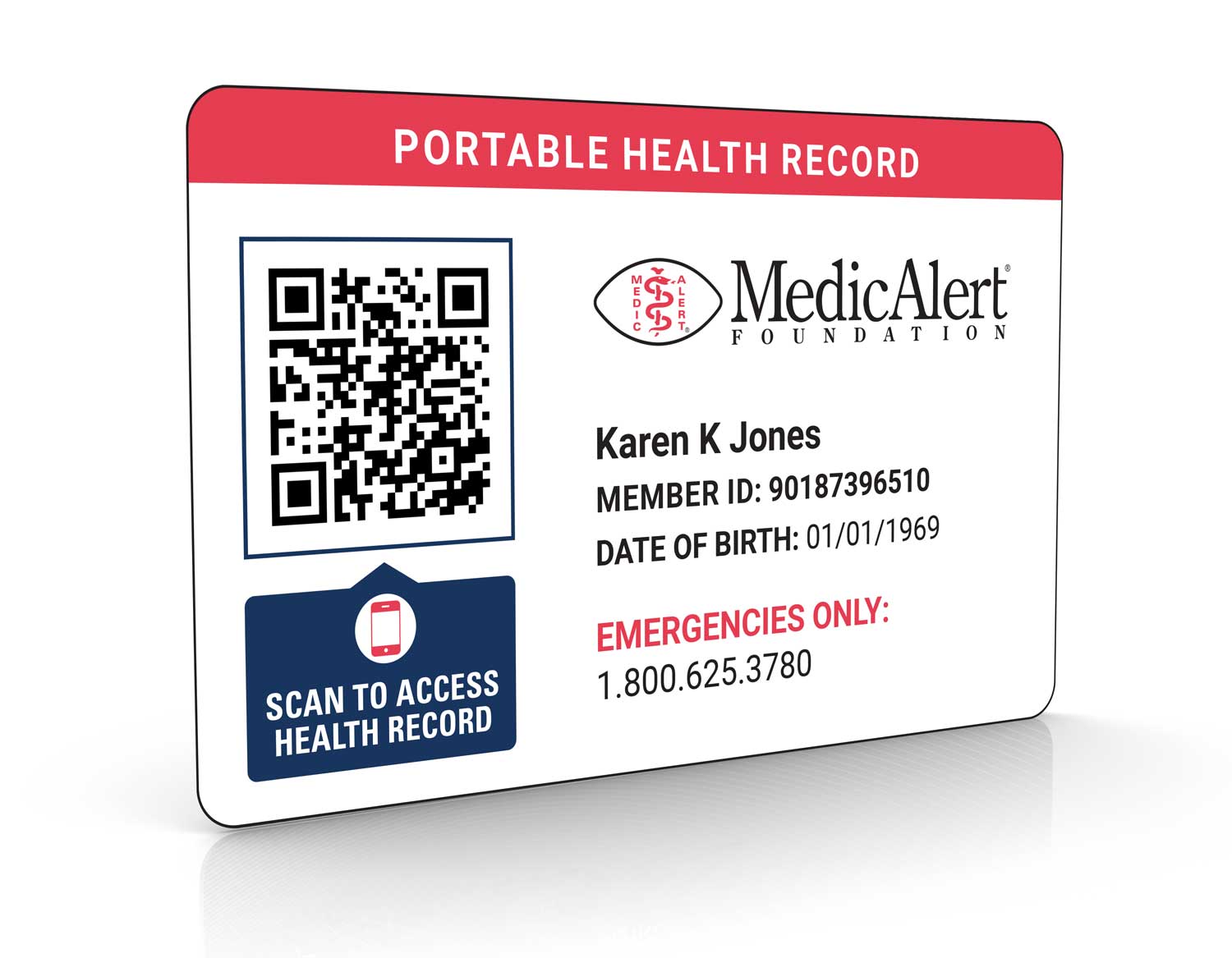What to engrave on MedicAlert medical IDs for lymphedema:
MedicAlert offers free custom engraving on all our lymphedema bracelets and other medical ID products. Engravings on medical IDs for lymphedema should include any critical medical information that can protect and save lives in an accident or medical emergency, for example:
- Lymphedema
- Restricted extremity (e.g., leg, arm, abdomen, genitals)
- Current medications
- Emergency contact information
- Designated physician or lymphedema specialist

Sample engraving. Consult our team if you need help engraving your medical ID for lymphedema.












